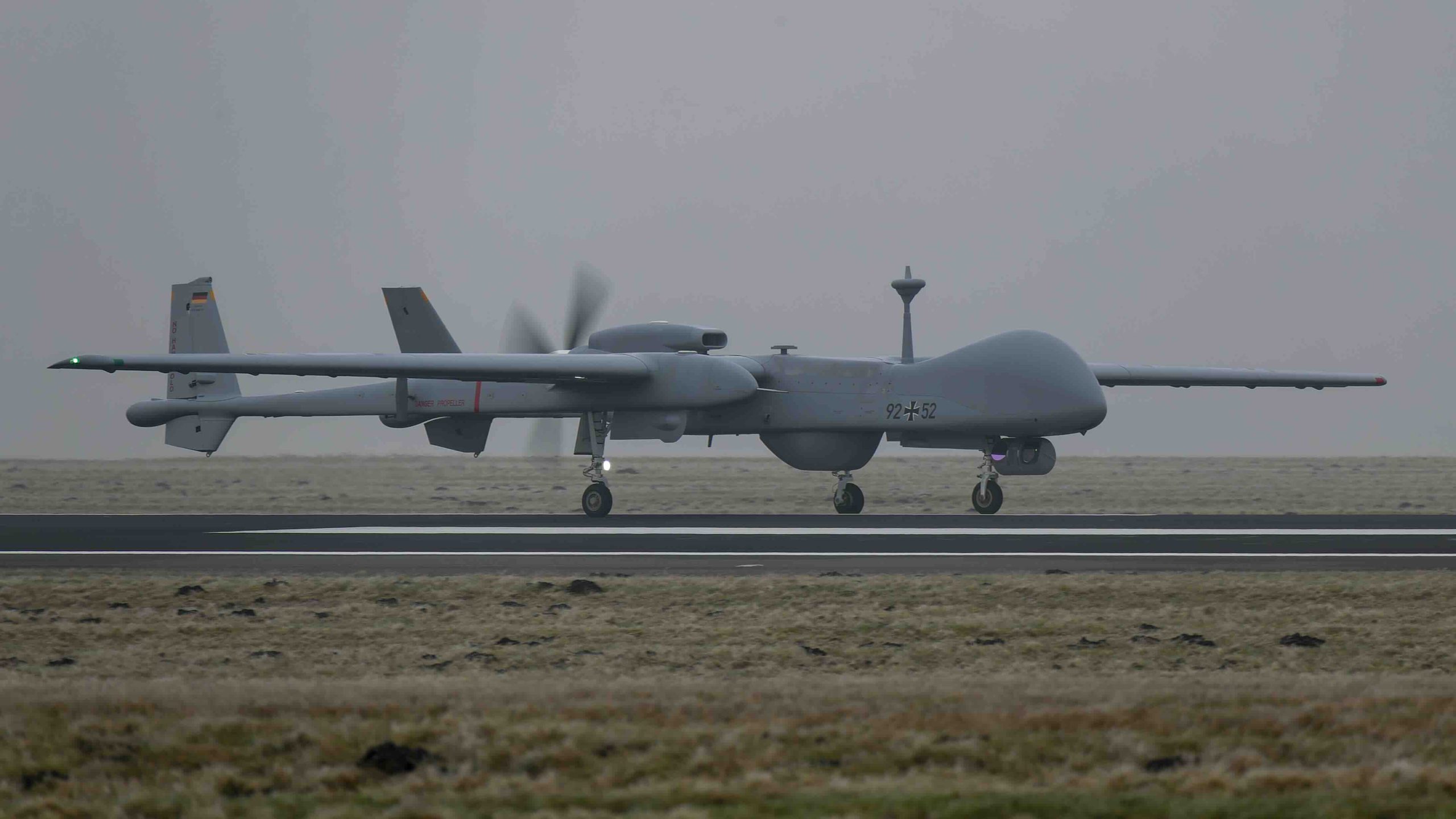


In an interview with Sky News, Kubilius warned that Russia could be capable of launching a full-scale drone-based assault on a NATO country within the next five years and said that EU member states must act now to build the capacity needed to respond.
Kubilius, a former Lithuanian prime minister, stated that Russia is expected to acquire up to five million drones, underscoring the scale of the technological shift in modern warfare. He emphasised that the ability to match or exceed this capability will be essential for European security. “We need to have capacities bigger than those [of Russia] in order to prevail,” he said.
The commissioner’s remarks follow a series of mass drone attacks by Russian forces on Ukrainian cities in recent weeks, part of a trend that has transformed drones into the dominant offensive weapon on the battlefield. Ukrainian drone units are now estimated to account for around 80% of Russian frontline losses, and the country is on course to produce more than four million drones in 2025 alone.
Kubilius highlighted that the nature of modern warfare, particularly in the 1,200-kilometre frontline in Ukraine, has changed radically. Areas such as “Death Valley” in eastern Ukraine are now completely surveilled and controlled by drones, rendering traditional armoured vehicles obsolete. “A traditional tank in that zone survives six minutes,” he said.
Drawing on this example, Kubilius warned that a country such as Lithuania, which shares a 900km border with Russia and Belarus, would need around three million drones per year to defend itself if conflict erupted. He added that European countries should not attempt to stockpile drones now, due to the rapid evolution of the technology, but instead focus on training pilots, developing industrial capacity, and building rapid response capabilities.
“On the European continent, at the moment, there are only two armies battle-tested with the ability to use millions of drones: one is Russian… the other is Ukrainian,” he said. “We need to learn a lot from Ukraine — how to organise defences against millions of drones, and also how to make your defence industry innovative.”
Private sector firms are already responding. German start-up STARK is manufacturing loitering munitions — drones designed to seek out and strike targets — for Ukraine. Josef Kranawetvogl, the firm’s senior vice president and a former German Army officer, said Ukraine’s innovation cycle was unprecedented. “Every day you have to adapt,” he said, describing how new tactics and technologies are developed in two-to-three-week intervals.
Elsewhere in Germany, Alpine Eagle is testing interceptor drones designed to shoot down incoming hostile drones at a range of up to 5km. CEO Jan-Hendrik Boelens said European nations were ill-prepared for the scale of drone attacks Ukraine is currently experiencing. He compared Ukraine’s drone consumption of 1.3 million units in a year — around 3,000 per day — with Germany’s estimated procurement of fewer than 200 drones over the same period.
A spokesperson from the German Defence Ministry contested those figures but confirmed that drones are now integral to daily military operations and training. The ministry also acknowledged that rather than accumulating outdated technology, the priority must be ensuring a flexible production capability that can scale rapidly in the event of a major conflict.
The EU has recently approved a €150bn defence loan scheme to enhance manufacturing capacity across the bloc, with particular emphasis on drone and air defence systems.
NATO Secretary General Mark Rutte has likewise underlined the need to accelerate procurement and innovation in unmanned systems. At the NATO summit, member states agreed to increase defence spending to 5% of GDP by 2035. “We see Russia’s deadly terror from the skies over Ukraine every day, and we must be able to defend ourselves from such attacks,” Rutte said.
The United Kingdom has incorporated drones as a central element of its Strategic Defence Review. Under a new 20-40-40 model, the British Army aims to rely on 20% traditional heavy platforms, 40% expendable drones and munitions, and 40% high-end reusable drones. An additional £2bn has been allocated to support this effort during the current parliamentary term. Defence Secretary John Healey said that the rapid pace of technological change requires constant adaptation. “Whoever gets new technology into the hands of their armed forces the quickest will win,” he said.
Germany, Denmark, and the UK have each signed agreements with Ukraine to jointly produce drones. In Berlin, the German Army’s Cyber Innovation Hub is seeing up to 20 daily pitches from companies offering drone solutions. Sven Weizenegger, who heads the hub, stressed the need to shorten the time between innovation and deployment. “We are very advanced in the innovation process… but what we are not good at is getting these things into real operations,” he said.
Germany’s government has promised to accelerate its defence spending, with the chancellor pledging to build “the strongest conventional army in Europe”. This includes a significant expansion in unmanned systems and air defences.
Kubilius’s warning comes amid a growing consensus among European defence officials that the continent is unprepared for the scale of drone warfare now defining conflicts such as Ukraine. As both Russia and Ukraine continue to escalate the development and deployment of unmanned systems, the EU is being urged to move swiftly to avoid strategic disadvantage.
SAFE Alone Will Not Rearm Europe: Structural Weaknesses Undermine EU Defence Finance Plan